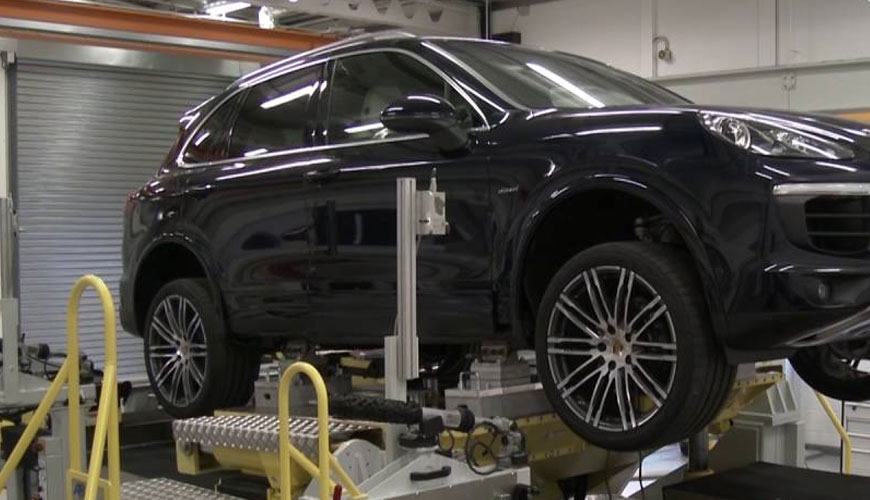

EUROLAB, with its state-of-the-art accredited laboratories and expert team, provides precise and fast testing services within the scope of ISO 10392 testing. ISO 10392 specifies methods for determining the position of a road vehicle's center of gravity (CG) as defined in ISO 3833. A method for determining the coordinates of the CG in the horizontal plane is provided. Two methods are specified for determining the CG's ground clearance.

Axle lift and stable pendulum methods are the most common methods for determining vehicle CG height. The axle lift method requires less specialized equipment and is typically an easier and less expensive method than the fixed pendulum method. The axle lift method can generally provide CG elevation accuracy in the range of a few percent, while the fixed pendulum method can achieve accuracy in the 0,5% range.
For the stable pendulum method, the CG of the combined vehicle and vehicle support platform system is below the pivot axis. This diagram illustrates the stable pendulum method in a tilt configuration with a lateral pivot axis parallel to the road plane. The balanced pendulum method can also be configured in a roll configuration with a longitudinal axis of rotation parallel to the path plane. The equations provided in this article are derived from a static torque balance around the pivot axis. In this case, a static breaking torque is applied to the system by suspending known masses at a known distance from the pivot axis.
A similar model and formulation of the equilibrium equations can be used for the unsteady pendulum method except that the pivot axis is below the CG of the combined vehicle and vehicle platform system. For the unstable pendulum method, a static retarding torque is required to hold the vehicle/platform system at any given angle of inclination about the pivot axis.
In this case, force measurements using a balance or load cell placed at a known distance from the pivot axis are used to determine the torque required to stabilize the system. Equations similar to those presented in this section, but with mathematical sign changes on some terms, can be derived for the unstable pendulum method.
EUROLAB assists manufacturers with ISO 10392 test compliance. Our test experts, with their professional working mission and principles, provide you, our manufacturers and suppliers, the best service and controlled testing process in our laboratories. Thanks to these services, businesses receive more effective, high-performance and quality testing services and provide safe, fast and uninterrupted service to their customers.
To get an appointment, to get more detailed information or to request an evaluation, you can ask us to fill in our form and reach you.